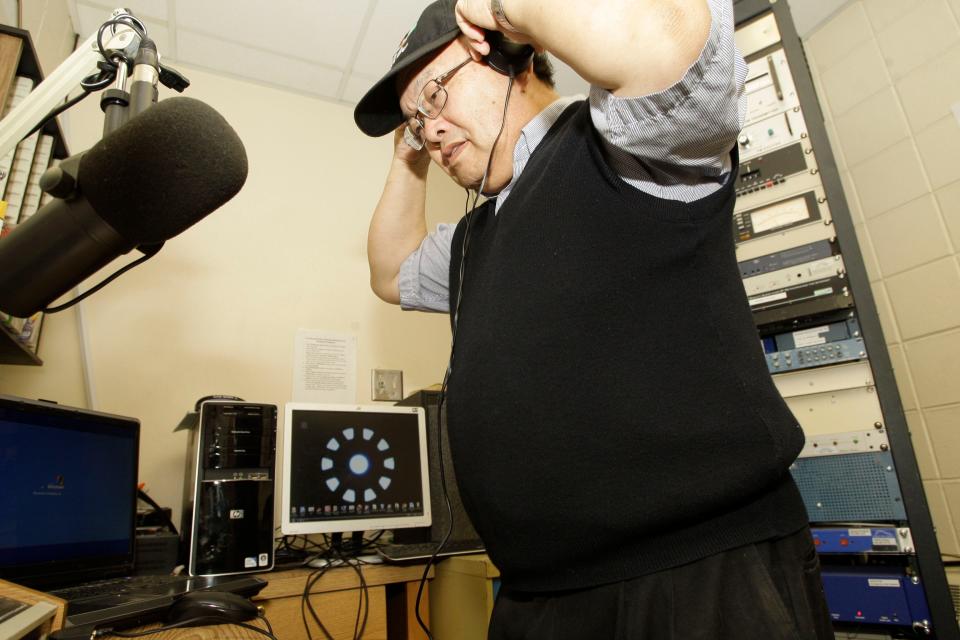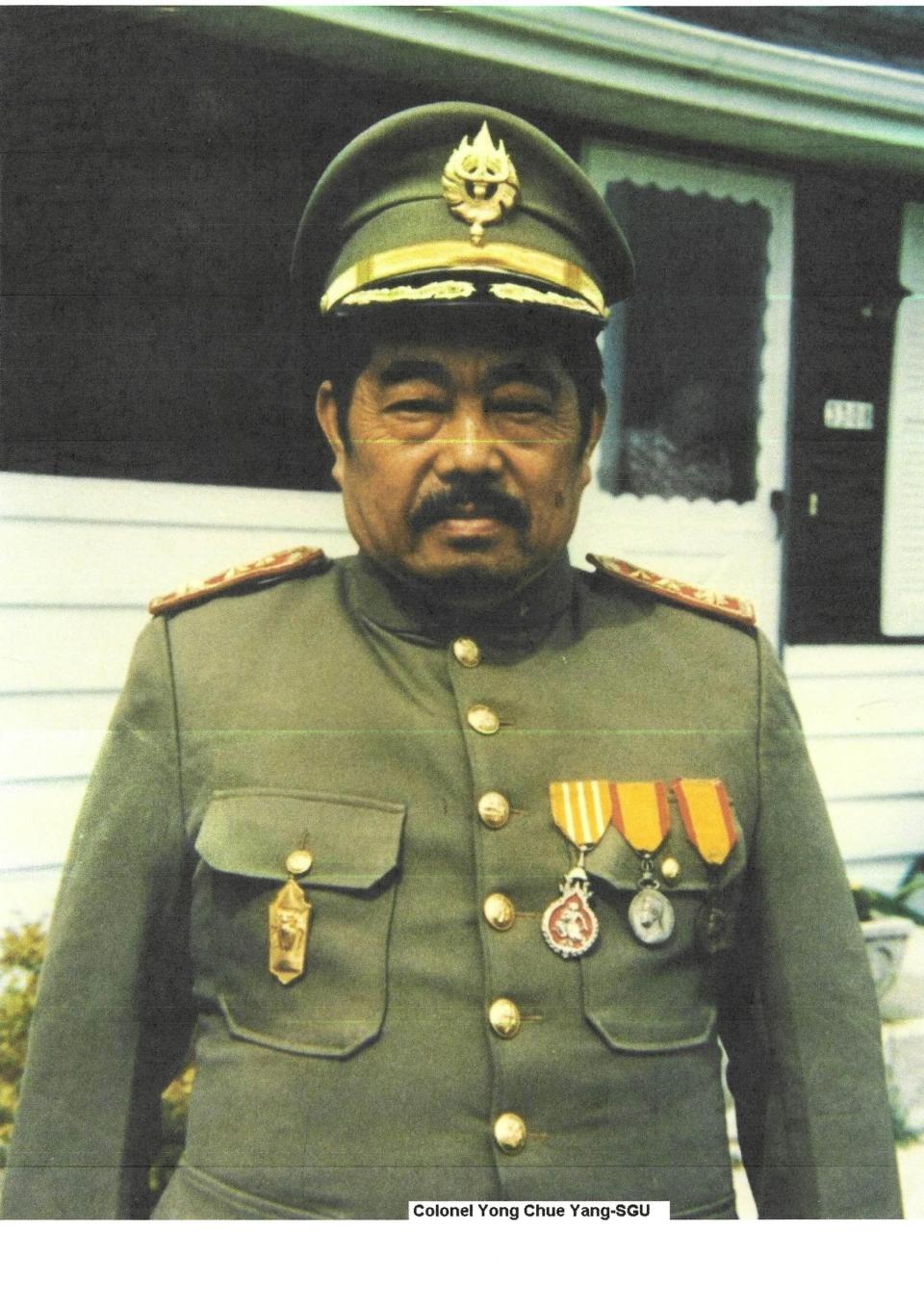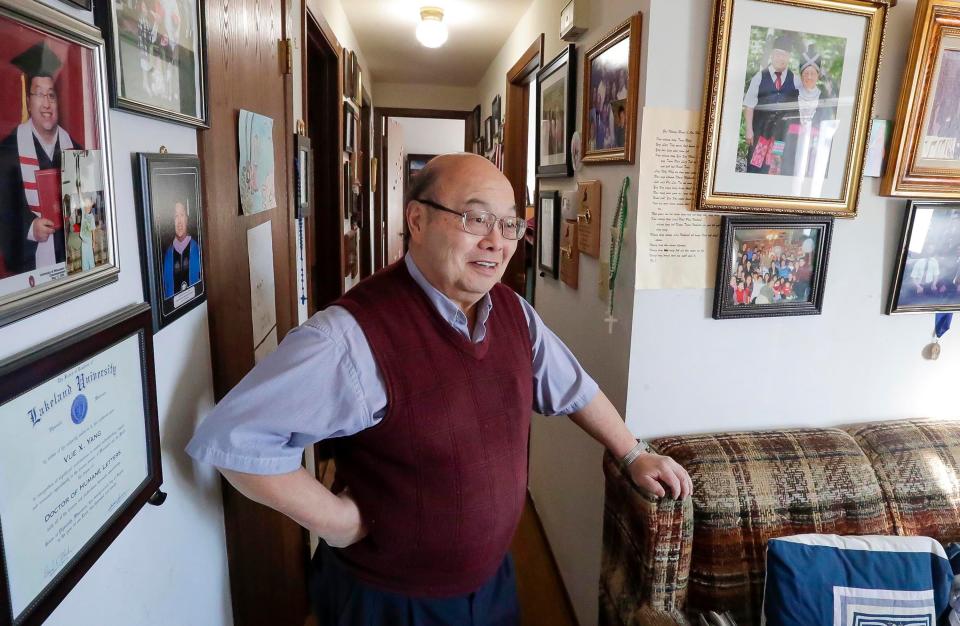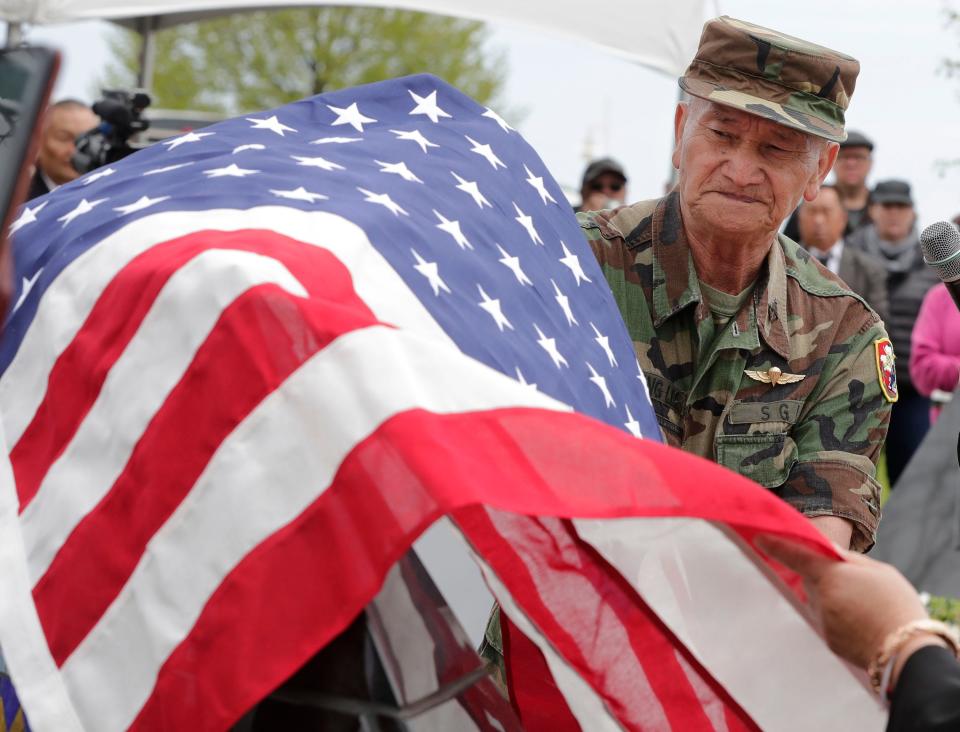His parents were the first Hmong refugees in Sheboygan. Since then, Vue Yang has been an engineer, advocate, radio host and more.
SHEBOYGAN - Floor-to-ceiling bookcases of neatly ordered cassettes and CDs line the walls of Vue Yang’s basement — recordings of his Hmong Sheboygan Radio show that aired weekly for more than 35 years.
Yang’s show finished in 2019, but since then, his recordings of music, traditional folktales and stories of how Hmong people live in Laos and in the U.S. have been playing online 24/7 so people can listen worldwide. He’ll let the recordings run for a few more years, he said.
The radio show is one of many aspects of Yang’s legacy since he moved to Sheboygan in 1981 to join his parents and siblings, who were among the first Hmong refugees to come to the city in 1976.
In Sheboygan, Yang helped organize a Hmong Mutual Assistance Association for the city and statewide. He and his wife, Paj, owned the Union Oriental Market (now Union Asian Market) grocery store for nearly 40 years. He spent years advocating to build the Lao, Hmong and American Veterans Memorial in Deland Park in the early 2000s, among other things.
“The younger generation tend to forget what happened with their grandfather or grandmother,” he said. “They know where they came from, but the reason why they came to Sheboygan maybe is not in their head. So we try to remember what happened and carry out tradition through the next generations.”

Like many Hmong families, Yang’s parents fled Laos after the U.S. Secret War.
Born in Laos the eldest in a large family, Yang escaped service in the CIA's “Secret War” when, after graduating high school, he received a Laos government scholarship to study in France in 1971.
His dad forced him to stay in school so he didn’t have to join the army, Yang said. Yang’s father, Col. Yong Chue Yang, as well as several of his uncles and cousins, served.
In 1975, the U.S. withdrew from Vietnam and the Secret War ended. Hmong people, who had been recruited to fight by the U.S., fled Laos to escape persecution by the new communist government.
Yang’s parents and siblings made it to refugee camps in Thailand, and eventually people in Sheboygan sponsored the refugees to come to the U.S.
“So, my parents came to Sheboygan, and they did not know about Sheboygan, even Wisconsin. The reason why they came here (was) because of the good heart of the people in the Sheboygan area,” he said.
Yang, still in France, received a master’s degree in chemical engineering and worked for four years on oil drilling rigs in the Middle East before he moved to Sheboygan in 1981 to help other Hmong families coming to the city.

From the climate to fair housing: Adjusting to Sheboygan
Yang remembers his grandfather arriving in Sheboygan for the first time one February. A couple feet of snow blanketed the city, and the trees were bare of leaves. His grandfather sent a message to relatives still in Thailand telling them not to come.
“The temperature in Laos would always be 70, 80, 90. … We never have snow,” Yang said. “In his mind, he said, ‘Oh no, we’re going to all die, because I do not have a place to grow rice.’”
But more Hmong refugees and immigrants came to Sheboygan from the late 1970s through the 1990s, leading to some learning and cultural adjustment for Hmong and white people in Sheboygan.
At the time, few Hmong people in Sheboygan spoke English, and many were unfamiliar with things like using U.S. money at the grocery store, Yang said. That’s one reason he opened his own store.
“When they come to the store, we speak to them in Hmong, we explain the money, then they feel more confident to go shopping at local stores,” he said.
Yang also served on the city’s fair housing committee for 16 years.
“We had a lot of interesting conversations,” he said with a smile, saying landlords did not want to accommodate large families of around 10 people in one house. “In Laos, people had a small house, but they stay all in that house. They will do the same here.
“So after years and years, things are getting much better. Most Hmong that live in town, they own their own house,” he said.
While Yang said there were some misunderstandings between Hmong families and white people in Sheboygan ― for instance, being mistaken as Chinese ― Sheboygan was “a very peaceful city.”
At the request of Mayor Richard Suscha in the early 1980s, Hmong families in Sheboygan started the tradition of marching in the Fourth of July parade dressed in traditional clothing.
“I remember about 32,000 people came to watch the parade, and we were applauded from the beginning to the end,” Yang said.

The Sheboygan Area School District also worked to accommodate Hmong students learning English in middle and high school, some of whom had never been to school before, he said.
Now, a high percentage of Hmong students in Sheboygan and Wisconsin go on to higher education, into professions like lawyers, teachers and doctors.
That’s true of Yang’s four children, who include two software engineers, a dentist and a college graduate with an English major.
“It’s hard to have one foot in both worlds, right, to have a more Americanized culture mixed in with a Hmong culture, but we’re getting by pretty well,” said Vue’s son Christopher, who started a dental practice in Sheboygan in 2016. “I think what I see is there’s really nothing stopping the first- or second-generation Hmong people who want to succeed from succeeding. I think we’ve been very blessed here in America.”
Veterans memorial, built after a ‘long fight,’ one of Vue Yang’s proudest accomplishments

Vue Yang and others — many of them veterans — started working on a veterans memorial project in 2000, by which time there were about 5,000 Hmong people in Sheboygan, Yang said.
“The Hmong served with the U.S. Secret War in Laos, but nobody knew about it,” he said.
“When I built the memorial, I kind of thought, well, maybe I didn’t serve in the army, but maybe I was saved to do something else — to recognize all those people who died serving the freedom. I had to tell their story.”
The group’s first plan, to build a monument in Fountain Park of two Hmong soldiers carrying a pilot, was rejected by the city council.
“We were a little bit mad, saying ‘Wow, we helped you keep freedom, we served with you, we protect your pilots, maybe sacrificing 10 soldiers for one pilot — and now in Sheboygan, we want to put a memorial to remember all those people, and you don’t like it,’” Yang said.
When the group returned to the city council with plans for the $140,000 circular monument now at Deland Park, it passed with a large majority of votes and came to fruition with funding and other help from local organizations.
“It was a long fight, it was controversial, there were some hard feelings among council members,” Ray Hernandez, the former dean of the University of Wisconsin-Sheboygan, who designed the circular memorial, told the Sheboygan Press at its dedication in 2006. “My approach was to be as non-confrontational as possible.”
Yang said Hmong refugees didn’t necessarily choose Sheboygan, they simply ended up here — but they ended up “in the right place at the right time.
“I like Sheboygan and I always tell people that, you know, Wisconsin is a good place to live.”
Yang has been happily retired since handing the family’s grocery store off to new ownership in early 2022.
“We were busy for the past 40 years. And now we don’t know what to do,” he laughed.
Reach Maya Hilty at 920-400-7485 or MHilty@sheboygan.gannett.com.
This article originally appeared on Sheboygan Press: From Laos to Sheboygan: Vue Yang tells story of helping Hmong refugees

